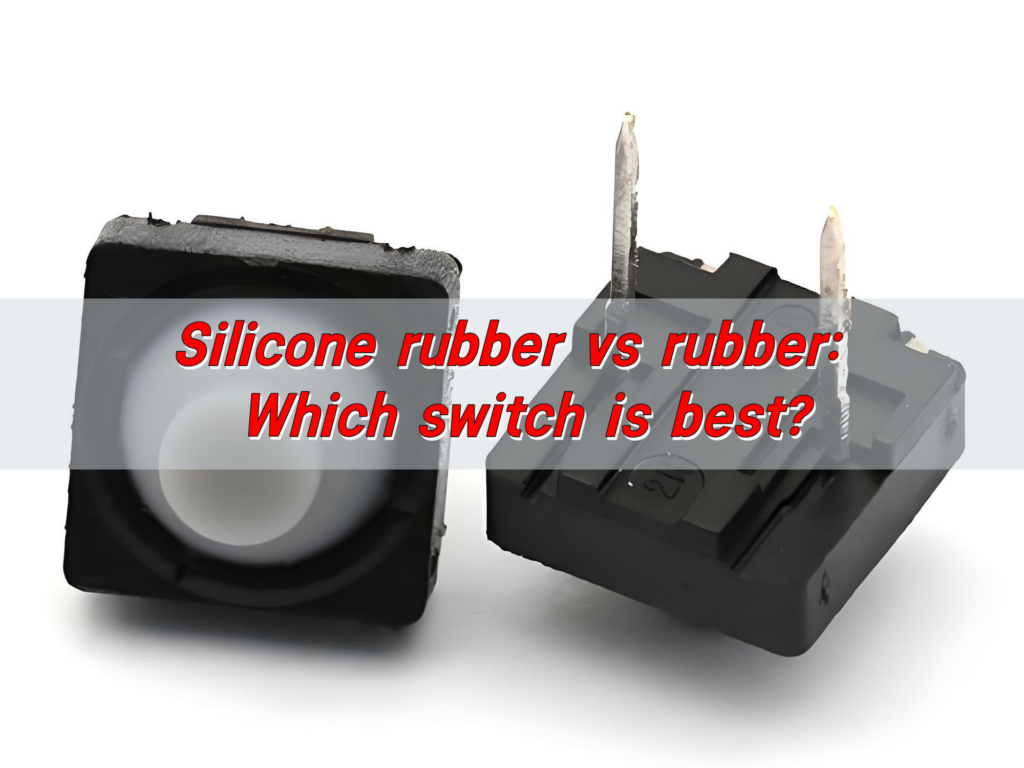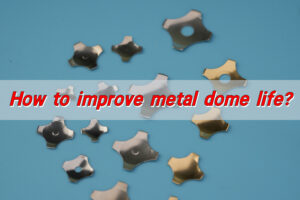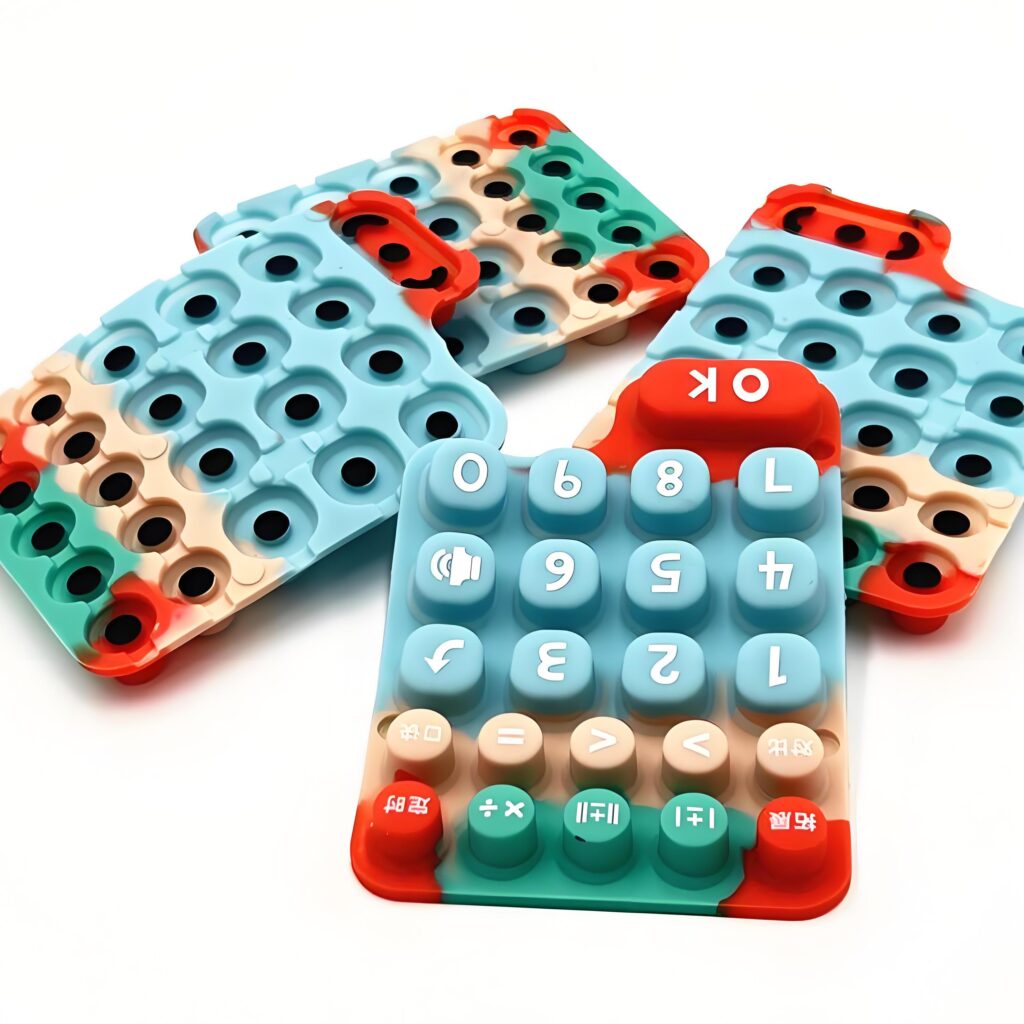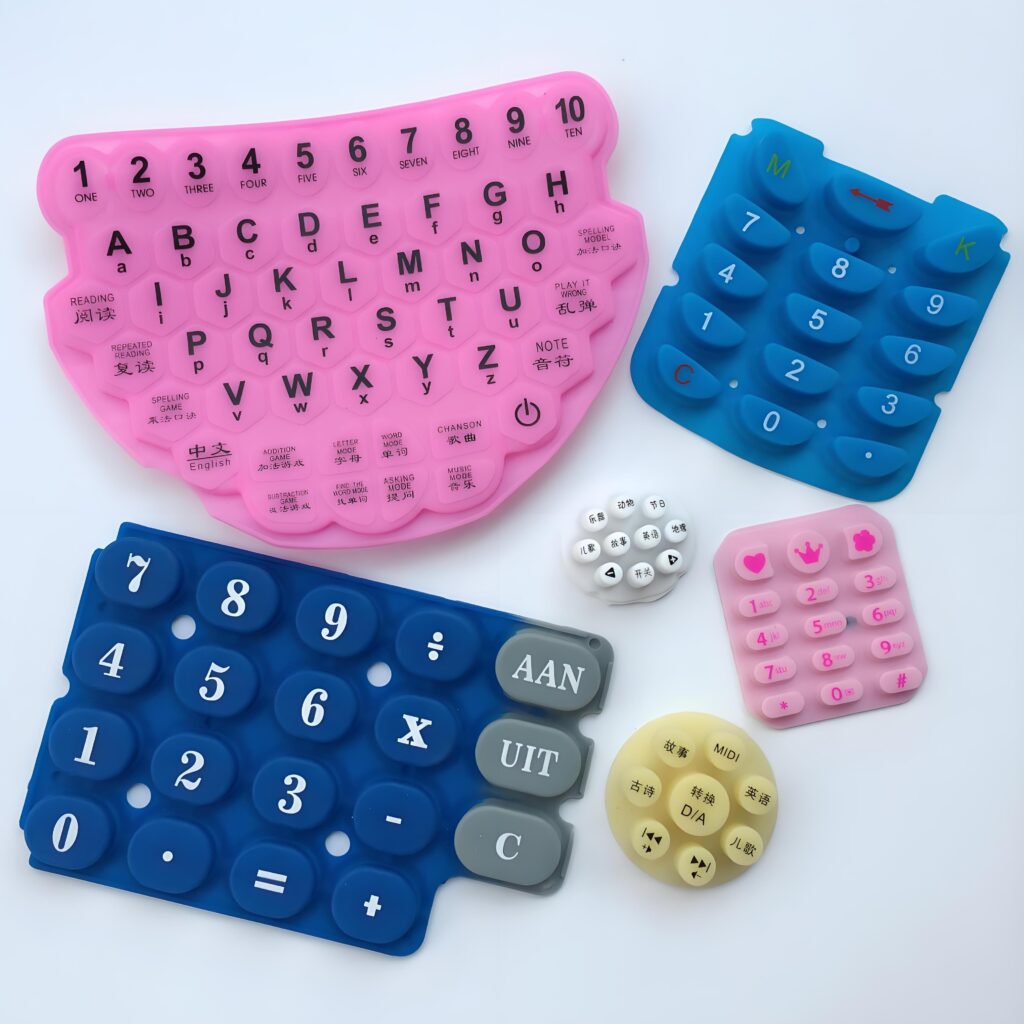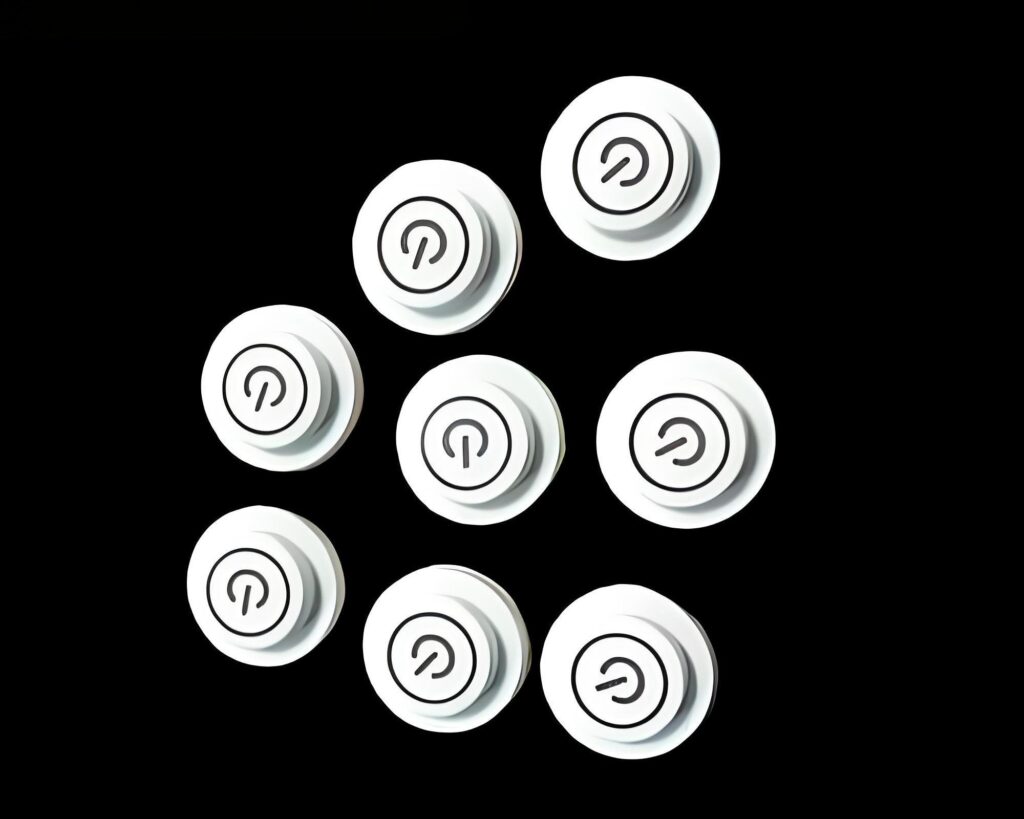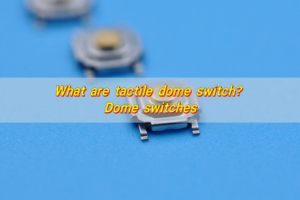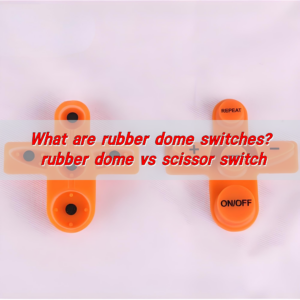Silicone rubber and rubber switches each have their own advantages. Silicone rubber switches have a wide temperature range (-50°C to 200°C), good chemical resistance, weather resistance and electrical insulation, and are suitable for harsh environments such as medical equipment. Rubber switches have good elasticity, strong mechanical properties, good processability and low cost, and are suitable for general industrial and civilian fields.
Is silicone rubber better than rubber?
Absolutely, silicone rubber is better than rubber in most switch applications, especially when performance and durability are top priorities.
Silicone rubber is a synthetic elastomer created to outperform traditional rubber in several ways. It handles extreme temperature swings, repels chemicals, resists moisture, and retains its flexibility even after years of use.
In contrast, rubber—especially natural rubber—is less stable. It may feel strong at first, but it starts to crack, harden, or deform after prolonged exposure to heat, UV, or moisture.
One of the biggest benefits of silicone rubber is its adaptability. It molds easily into various shapes, making it perfect for tactile switch domes, membrane layers, and custom button pads. Traditional rubber lacks this level of customizability and often fails under high-usage conditions.
Which lasts longer rubber or silicone?
Silicone rubber can maintain its mechanical properties for 15 to 20 years or more, depending on the usage and environment. It withstands both hot and cold climates, making it ideal for automotive interiors, outdoor control panels, and industrial devices. It doesn’t crack or degrade like rubber does.
Rubber, on the other hand, especially natural rubber, typically begins to degrade within 5 to 10 years. It reacts to oxygen, sunlight, and chemicals. Once the surface starts to oxidize, the material becomes brittle, losing its original elasticity and function.
Even thermoplastic rubber vs silicone comparisons show silicone wins in lifespan. Thermoplastic rubbers are recyclable and cheap but lack the thermal resistance and elasticity retention that silicone provides over time.
How can you tell silicone from rubber?
- Feel: Silicone rubber is silky, smooth, and slightly soft. Rubber feels tackier and firmer to the touch.
- Smell: Natural rubber emits a noticeable odor, especially when warmed. Silicone rubber is usually odorless or has only a faint, neutral smell.
- Elasticity: Silicone bends more gently and slowly returns to form. Rubber snaps back faster and feels stiffer.
- Color fade: Rubber tends to discolor with age, while silicone retains its pigment.
- Burn test: Silicone burns with a clean flame and produces white ash. Rubber burns darker and leaves behind black residue and strong fumes.
In the context of switches, you can often feel the difference right away. A silicone rubber switch offers a smoother, more refined press. Rubber switches may feel rougher or stiffer and degrade faster with use.
What are the benefits of silicone rubber?
Silicone rubber is not just good—it’s exceptional. When used in switch assemblies, its benefits are powerful and clear.
- Extreme Temperature Resistance: Silicone performs well in both freezing and scorching temperatures. It operates reliably between -60°C and 230°C, making it suitable for aerospace, medical, automotive, and outdoor uses.
- Superior Elasticity: Even after thousands of compressions, silicone keeps its form. It doesn’t permanently deform like rubber might.
- Chemical and Moisture Resistance: Silicone resists oils, solvents, water, and cleaning agents. That makes it ideal for hygienic environments like hospitals and laboratories.
- UV and Ozone Stability: This is where natural rubber fails fast. Silicone remains intact under sunlight and open-air exposure, showing no cracks or discoloration.
- Custom Molding: Silicone’s flexibility in manufacturing allows for precision dome shapes, texture enhancements, and ergonomic layouts.
- Non-toxic and Hypoallergenic: Safe for human contact, silicone rubber is often used in healthcare equipment, food-grade devices, and personal electronics.
These advantages make silicone rubber a game-changer in switch design, delivering not just functionality but user satisfaction.
What is the lifespan of silicone rubber?
Under normal conditions, silicone rubber components last up to 20 years without significant degradation. In harsh conditions, like direct sun, chemical exposure, or repeated compression, it still performs reliably for 15+ years.
This longevity reduces maintenance and replacement costs. You don’t have to worry about keys becoming stiff, buttons losing their spring, or circuits failing from moisture leaks.
In contrast, rubber components degrade much faster. UV rays break down the carbon bonds. Heat causes hardening. Cold causes cracking. Moisture leads to swelling or weakening.
Most rubber parts require replacement within 5 to 7 years, sometimes sooner in demanding applications.
So if you need a switch that performs flawlessly over the long haul, silicone rubber is your material.
How do rubber membrane buttons work?
A rubber dome switch or membrane button uses a rubber (or silicone rubber) layer with domes positioned above circuit contact points.
Here’s how it works:
When you press the button, the rubber dome collapses, making contact with the printed circuit. This completes the circuit, sending a signal to the device. Once released, the dome returns to its original shape, thanks to the material’s elasticity.
Rubber domes, especially silicone ones, are silent, smooth, and customizable, making them ideal for consumer devices, medical panels, and remote controls.
What are the applications of silicone rubber vs rubber?
Silicone Rubber Applications:
- Medical devices: Surgical tools, hospital keypads, diagnostic machines
- Automotive panels: Dashboard buttons, climate control keypads
- Outdoor electronics: Weatherproof controls and terminals
- Consumer electronics: Premium keyboards, smart remotes
- Industrial machines: Dust-resistant and chemical-resistant control pads
Rubber Applications:
- Basic remotes: Low-use home electronics
- Simple toys and tools: Low-cost switches
- Indoor controls: Wall keypads, appliances
- Budget products: Where cost trumps durability
If you want a product that performs without fail, especially in challenging environments, silicone rubber offers next-level confidence.
How to choose between rubber dome switch and metal dome switch?
Both rubber dome switches and metal dome switches serve critical roles in electronic interface design.
- Rubber Dome Switch: Made from silicone rubber, Soft, quiet press, Customizable tactile feel, Cost-effective, Best for consumer electronics, medical devices, and quiet environments
- Metal Dome Switch: Uses stainless steel domes, Delivers a crisp, tactile snap, More durable under high-use conditions, Best for industrial machinery, rugged devices, or precision input systems
If you’re building something where user comfort and silent operation matter, rubber dome is the better fit. If you need a sharp tactile feel with a longer actuation lifespan, metal dome is the way to go.
Conclusion:
In the comparison of silicone rubber vs rubber, there’s no question—silicone rubber is the superior material for switches. It offers longer lifespan, better resistance to heat and chemicals, softer tactile feedback, and customizable designs that rubber simply can’t match.
Whether you’re working with rubber dome switches, membrane buttons, or metal dome systems, silicone rubber gives you the edge in both performance and user satisfaction.
If you’re unsure which material fits your project best, we’re here to help.Contact us today at sales@metal-domes.com


